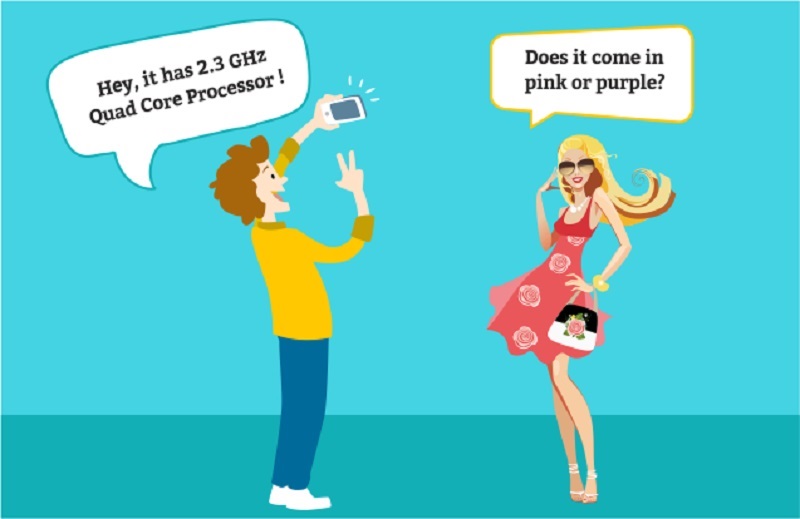
Impulse purchasing isn’t just propelled by an assortment of Consumer Perspective factors yet additionally impacted by outside, market-related boosts. You can stimulate impulse buys by Comparing Psychology. The terms luxury is an advancing term very much like the luxury market and the luxury buyer. The present luxury goods shoppers are unique concerning the traditional wealthy classes of the past. To top it, the pandemic has likewise modified the shopping behaviour of both women and men.
While the Gender Factor imbalance in customers frequently grabs the headlines, because their talents play out in the limelight, female customers likewise have generally been rare, notwithstanding a new spate of luxury brand items buying. Women are regularly viewed as the leaders in the commerce business, nonetheless, a new report from the Shullman Research Center shows that men spent more, more oftentimes, and for other people more often than women.
Because of the revealed acquisition of 1,690 members across the United States, an expected 67 million grown-ups got at least one luxury thing last year. The larger part, 58% or 39 million, are men while 42% or 28 million, are women. The middle number of luxury buys was about something similar – 2.9 for men and 2.8 for ladies – recommending that men spend more than women per buy.
The median expense of the latest luxury thing that men bought, $1,150, was multiple times greater than ladies’ latest luxury acquisition of $250 proposing men make more costly buys than ladies.
Most of the luxury buys, 83%, are individual buys for oneself. With regards to buying for other people, men are somewhat more probable than women to report that they’ve bought something for a family member or as a gift.
It is likewise critical to take a look at the inspirations and contemplations behind luxury buys for each gender.
In the Shullman report explicitly, analysts represented the brief, “What you read, see or hear the word luxury, if it’s please described briefly what you think about… ”
Twenty themes rose out of the examination of reactions and there was an unmistakable distinction in those that showed up just in the men or women’s reactions.
Just men utilized the words, “best, rich, exclusive, and ease” while just ladies utilized the words, “craftsmanship, fine, premium, style and unique.”
Perceiving the various motivations of each gender helps brands and objections better market to every sex. An aircraft may focus on male consumers when pushing the advantages of business-class while a car rental organization would be wise to women when pushing luxury vehicles dependent on their style and status.

Women are More Engaged in Apparel Purchasing than Men
Notably, women shoppers are more connected with than men consumers on all of the three of the accompanying measures:
- “Price” was a significant factor for 70% of women customers, contrasted with 55% of male customers.
- Some 67% of ladies felt that “Fits well” was critical to their clothing buying, contrasted with 56% of male customers.
- Some 60% of women customers felt that attire that “Looks great” was significant, while just 47% of men picked it as a factor.
While ladies are more connected with customers, both genders thought the main variables when buying clothing were the price, a solid match, and attractive items. Subsequently, both genders value similar three essential variables when buying apparel.
Comparing Psychology of Shopping Behaviours for Both Men and Women

Differences in shopping behaviour between demographics depend on brands’ strong interest in brands as they strive to tailor their promotions to fit their target customers impeccably.
This is much more significant in the advanced time of advertising when customized and custom messages are all the more necessary.
Translating the difference in luxury spending habits between men and women was the inspiration of a new report from Shullman. What the information showed was that men spend more on luxury and are bound to purchase things for others than for themselves.
58% of luxury spending somewhat recently came from men and 42% from women. Curiously, the number of luxury things bought was around no different for men and women, with a normal of 2.9 things for men and 2.8 things for ladies.
This recommends that people look for luxury things at around a similar rate with the distinction being in how much cash is spent on everything.
The uniqueness can be ascribed to various variables, including the pay that sees men bound to have higher wages than women.
This is upheld by additional information that shows the higher the pay of the customer, the smaller the gap in ways of managing money among men and women. As such, the most well-off men and women have comparative luxury shopping propensities, while the less well-off customers show the previously mentioned variations.
In general, people take time to explore buying choices that are vital to them. Since luxury goods shopping is generally more vital to ladies than men, ladies are bound to invest energy wondering over expected buys. Eventually, both genders need the same thing when buying luxury products: something that fits well and looks great at an affordable price.

Can you be more specific about the content of your article? After reading it, I still have some doubts. Hope you can help me.
Simply a smiling visitant here to share the love (:, btw outstanding layout. “Everything should be made as simple as possible, but not one bit simpler.” by Albert Einstein.
Can you be more specific about the content of your article? After reading it, I still have some doubts. Hope you can help me.
Thank you for your sharing. I am worried that I lack creative ideas. It is your article that makes me full of hope. Thank you. But, I have a question, can you help me?